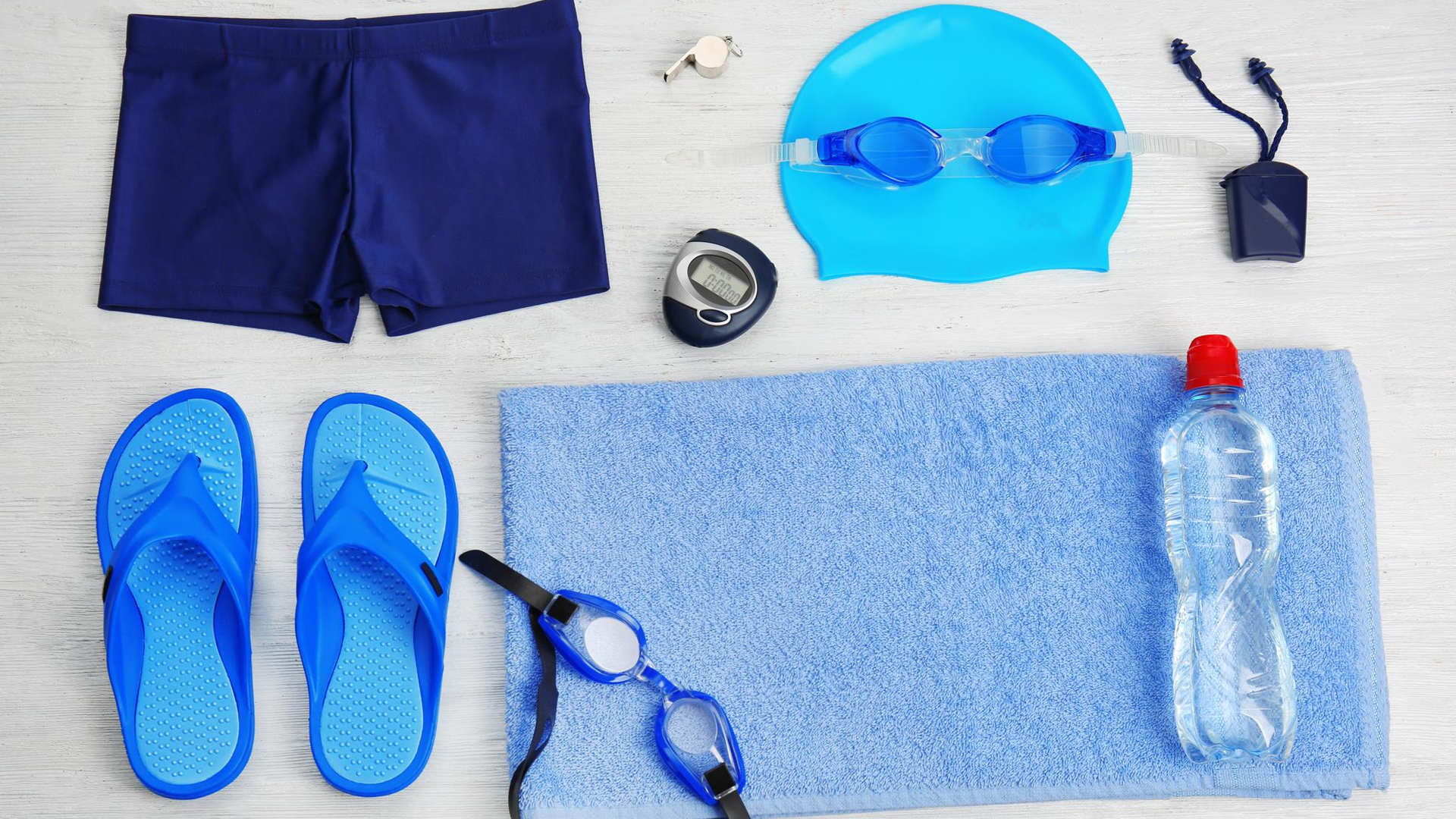Whether you’re a seasoned swimmer training for a race, a beginner learning the ropes, or someone who simply loves to float and relax in the pool, swimming is an incredibly rewarding and versatile activity. But before you dive into the water, it’s important to have the right gear to make the experience comfortable, safe, and enjoyable.
In this article, we’ll cover the essential items you’ll need for swimming, from the basics to the extras that can elevate your swim routine. So, if you’re ready to get your gear in check and make the most out of your time in the pool, here’s everything you should consider:
1. Swimsuit: The Foundation of Your Swim Gear
No matter how skilled a swimmer you are, a well-fitting swimsuit is an absolute must. It’s not just about style; the right swimsuit enhances your performance, comfort, and confidence in the water.
- For Beginners and Casual Swimmers: A simple one-piece swimsuit or a comfortable two-piece bikini (for women) and classic swim trunks (for men) are perfect for recreational swimming.
- For Competitive Swimmers: If you’re serious about your swim training or racing, opt for a tech suit or speed suit. These swimsuits are designed with materials that reduce drag and improve hydrodynamics, helping you swim faster.
- Fit: Make sure your swimsuit fits snugly but isn’t too tight. A good-fitting suit should allow for full movement, whether you’re doing the breaststroke, freestyle, or simply floating.
2. Swim Cap: Protect Your Hair and Streamline Your Profile
A swim cap isn’t just for fashion—it’s an essential piece of gear that offers several practical benefits. Here’s why it should be in your swim bag:
- Hair Protection: Swim caps help keep your hair dry (to an extent), protecting it from the harsh effects of chlorine and saltwater, which can dry out and damage your hair over time.
- Hydrodynamics: A swim cap reduces drag and creates a more streamlined shape in the water, allowing you to swim more efficiently.
- Visibility: Bright-colored caps are often worn in open-water swimming, increasing your visibility in the water, which is important for safety.
Types of Swim Caps:
- Latex: Lightweight and tight-fitting, latex caps are great for race day but can sometimes feel a little uncomfortable.
- Silicone: Silicone caps are more durable, easy to put on, and provide a more comfortable fit. They’re great for regular training and recreational swimming.
- Lycra: These are less tight and ideal for people with long hair or those who prefer a looser fit. However, they don’t keep your hair as dry.
3. Goggles: Clear Vision Underwater
Unless you’re swimming in a perfectly clear lake or the Caribbean, chances are you’ll need a good pair of goggles to protect your eyes from the chlorine in the pool or salt in the sea. Goggles help you see clearly underwater while also preventing eye irritation.
- Fit: Choose goggles that create a good seal around your eyes without being too tight. Leaking goggles can be frustrating, so make sure to adjust the straps and test them for comfort before you dive in.
- Lens Options:
- Clear lenses: Best for indoor swimming or low-light conditions.
- Tinted lenses: Ideal for sunny days or outdoor swimming to reduce glare.
- Mirrored lenses: Great for outdoor and competitive swimmers who want to block out excess sunlight.
4. Swim Fins: Boost Your Kick Technique and Strength
Swim fins are an excellent training tool for swimmers at any level. They help improve your kicking technique, strengthen your legs, and increase your speed and endurance.
- Short Fins: Ideal for beginners or those looking to work on their technique and kicking strength.
- Long Fins: Great for more experienced swimmers, long fins increase propulsion and help improve swim form and leg strength. They can also help with flexibility in the ankles and improve stroke technique.
While fins aren’t essential for every swimmer, they can be a valuable addition to your workout if you’re looking to build power or improve your efficiency in the water.
5. Kickboard: Focus on Your Legs and Core
A kickboard is a versatile piece of equipment used primarily to isolate your legs and focus on improving your kicking technique. It’s great for swimmers who want to strengthen their legs or focus on their freestyle or backstroke.
- Beginner Swimmers: A kickboard can help you stay afloat while you learn proper kicking techniques.
- Advanced Swimmers: Use a kickboard for specific drills to target leg strength and refine your stroke technique.
6. Pull Buoy: Focus on Your Upper Body
A pull buoy is a flotation device that sits between your thighs, allowing you to focus on your upper body strength by eliminating the need for leg propulsion. It’s perfect for swimmers who want to work on their arm technique and build upper body strength.
- Technique Training: The pull buoy forces you to engage your core and upper body while keeping your legs from doing too much work. It’s especially helpful for improving stroke efficiency in the freestyle and backstroke.
- Core Engagement: It also helps you build core strength by stabilizing your torso and encouraging proper body positioning.
7. Swim Towel: Dry Off in Style
After you finish your swim, a good towel is essential for drying off and staying comfortable. Opt for a microfiber towel if you want something lightweight and compact—perfect for packing in your swim bag. For post-swim, fluffy towels are great for wrapping up, but they can be bulky.
- Quick-Dry Towels: For swimmers on the go, a quick-dry towel is your best bet. These towels dry off fast and are compact enough to carry with you to the pool or beach.
- Large Beach Towels: If you’re swimming outdoors or at the beach, a larger towel can help you stay comfortable and dry.
8. Waterproof Bag: Keep Your Gear Safe
After your swim, the last thing you want is wet gear ruining your bag. A waterproof swim bag helps keep your towel, clothes, and swim gear dry. Some swim bags also have compartments specifically designed for wet suits, towels, and other items, so you can separate them from your dry clothes.
- Mesh Bags: These allow for ventilation, so your wet gear won’t smell after you swim.
- Waterproof, Sealed Bags: For the ultimate protection, consider a sealed waterproof bag that keeps everything dry even in the rain.
9. Water Bottle: Stay Hydrated
Swimming can be a demanding workout, and it’s easy to forget to stay hydrated when you’re in the pool. Having a water bottle on hand ensures that you stay refreshed, especially if you’re training or swimming for extended periods.
10. Sunscreen: Protect Your Skin
For outdoor swimmers, protecting your skin from the sun is crucial. Chlorine and saltwater can already be drying, so adding the risk of sunburn on top can lead to a very uncomfortable experience. Choose a waterproof, broad-spectrum sunscreen to protect your skin from harmful UV rays.
- Waterproof Sunscreen: For extended swimming sessions, always choose sunscreen that won’t wash off with water.
- SPF 30 or Higher: Make sure your sunscreen has a high SPF (preferably 30 or higher) to ensure optimal protection.
Final Thoughts: Swimming Made Easy with the Right Gear
Swimming can be a fun, invigorating, and highly rewarding activity, whether you’re swimming for fitness, relaxation, or recreation. By making sure you have the essential gear, you’ll not only improve your performance but also enjoy the experience more.
From your swimsuit to your swim cap, goggles, and everything in between, having the right equipment makes all the difference. So, gear up and dive in—your next swim adventure awaits!





